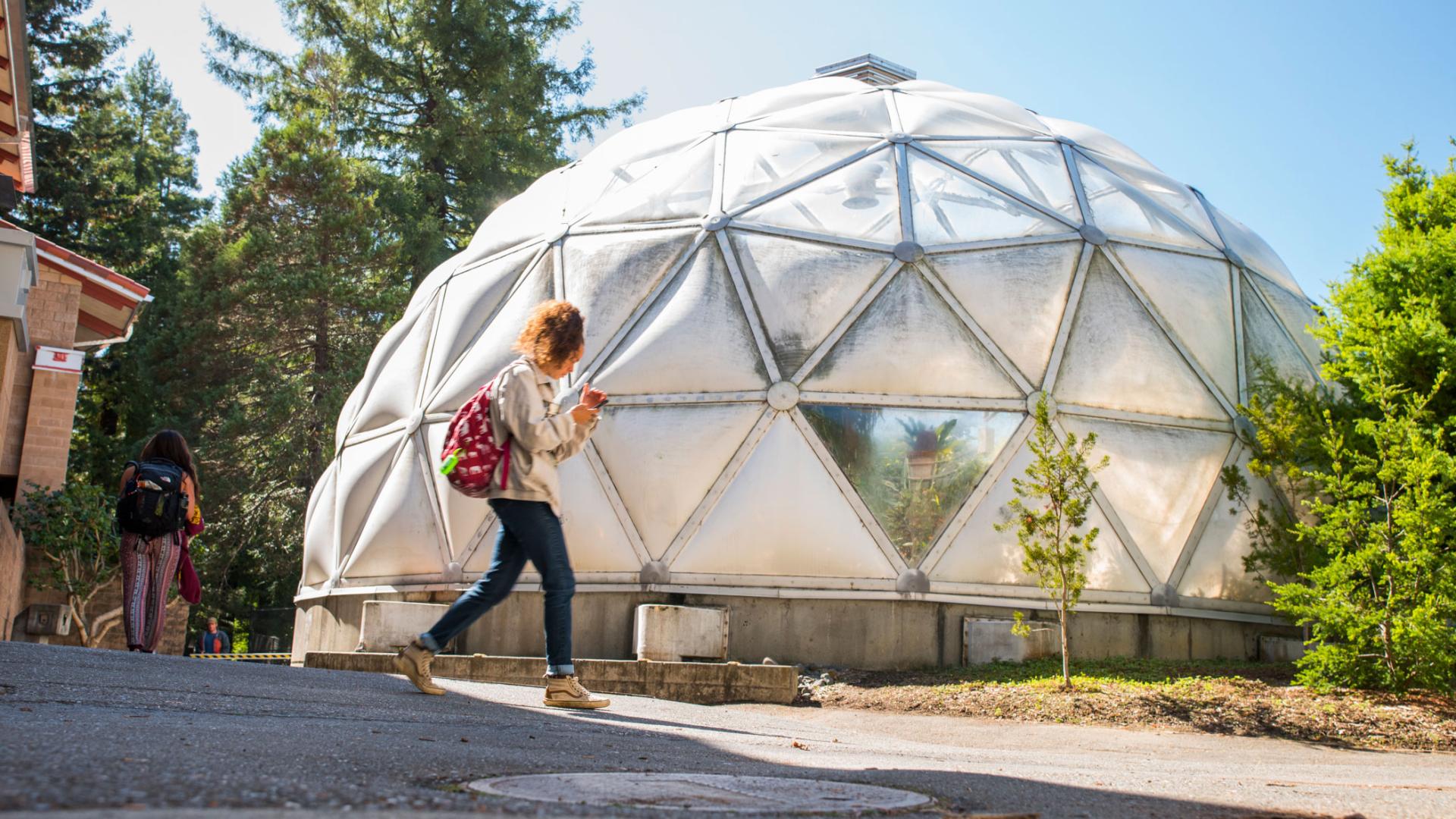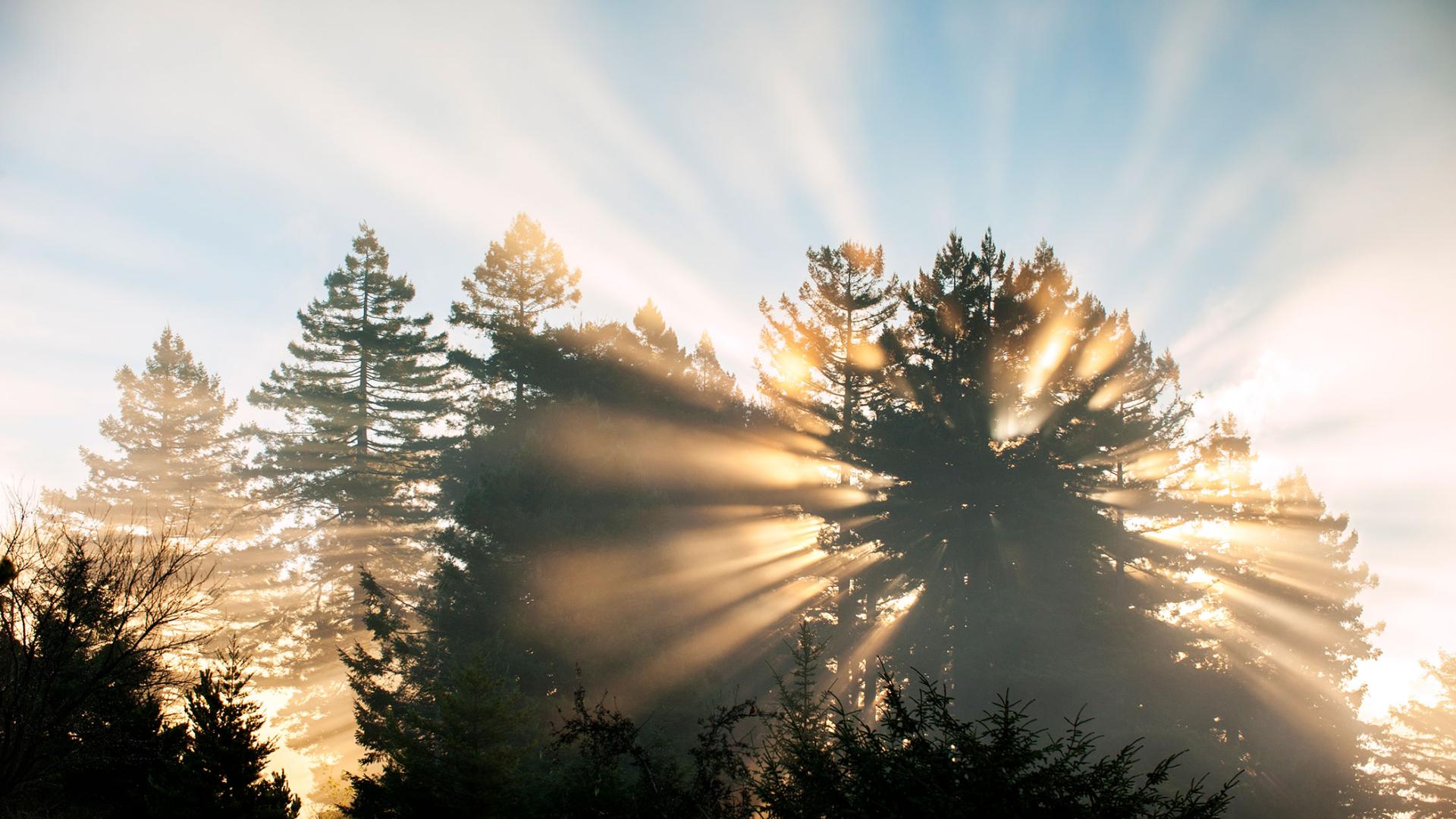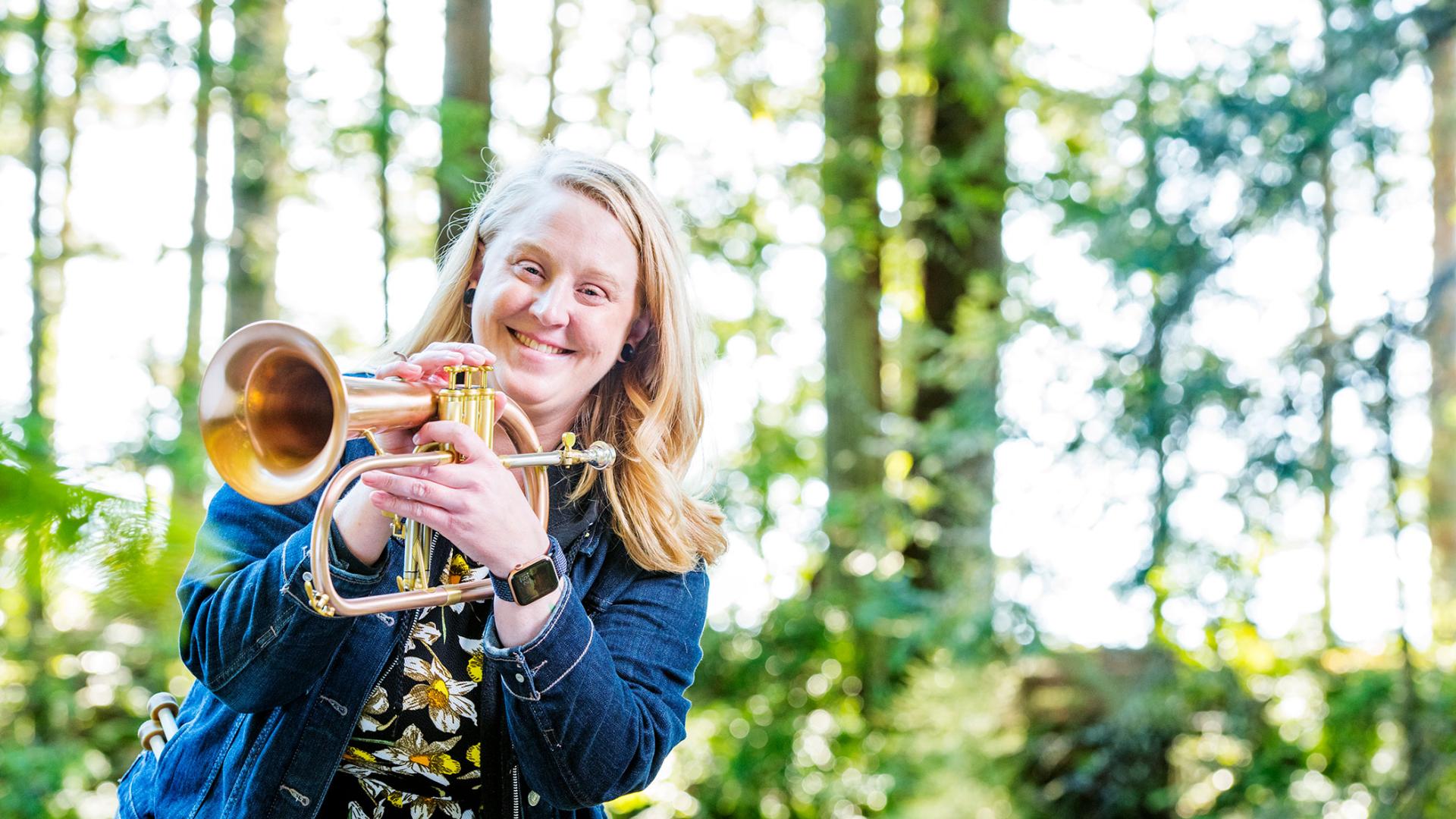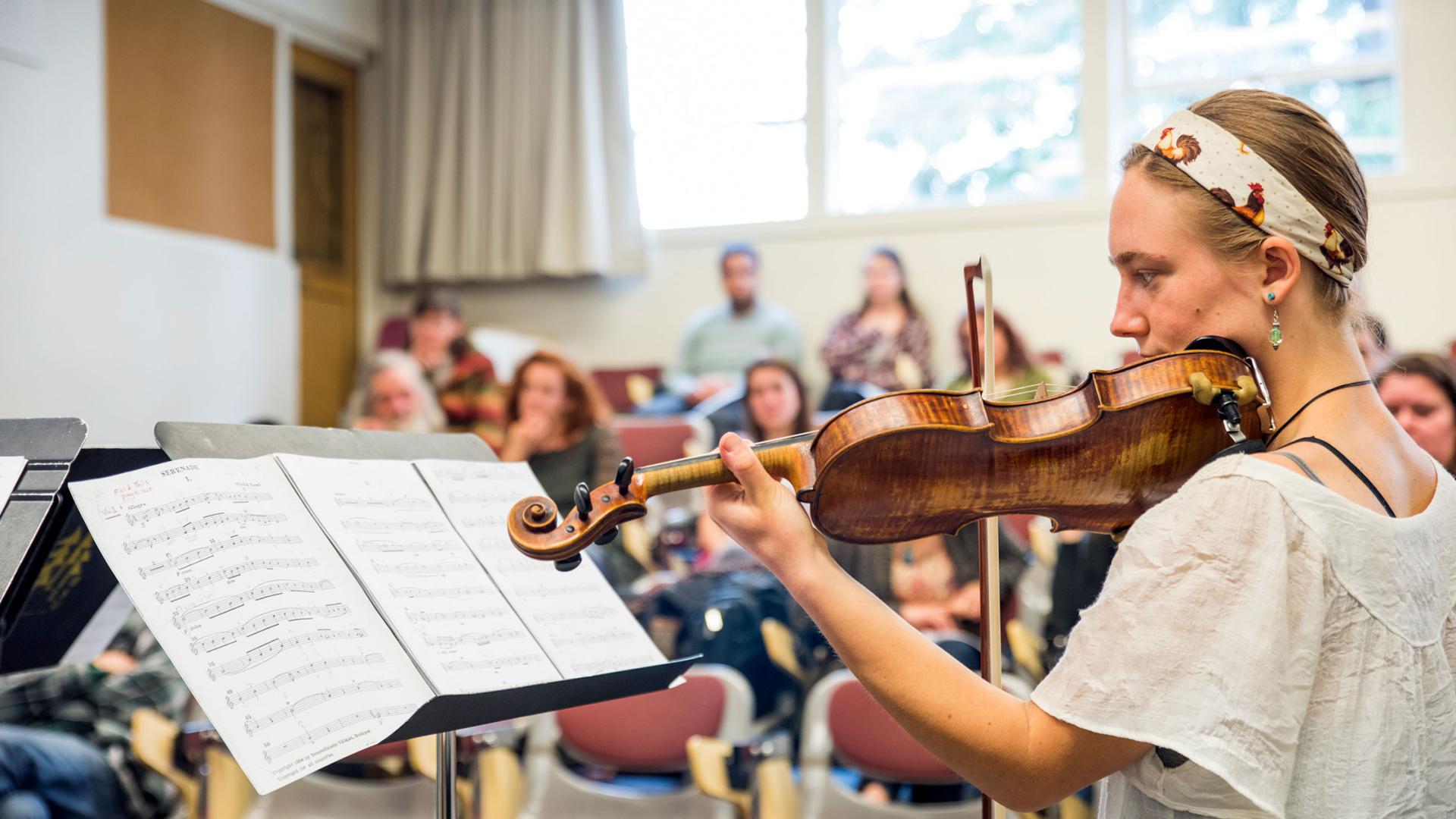Breadcrumb
Achievements
Find out what our students, faculty, and staff are being recognized for.
Dr. Lucy Kerhoulas
Forestry, Fire & Rangeland Management
Lucy Kerhoulas received a $180,000 grant from the Columbia Land Trust to investigate white oak responses to forest restoration thinning treatments aiming to reduce fire fuels, overstory competition, and tree drought vulnerability. This project will measure oak physiology before treatments and two years after treatments; findings will help hone management prescriptions to maximize Oregon white oak resiliency at the eastern edge of the species' range. The project is in collaboration with Oregon State University, the Natural Resources Conservation Service, the Columbia Land Trust, and the East Cascades Oak Partnership and will support one graduate student and numerous undergraduate students.
Regina Khoury, Brandon Browne
Geology
Regina Khoury (MS Student, Environmental Systems - Geology) and professor Brandon Browne (Geology Department) presented their original research poster in Spokane, WA, at the May 15-17, 2024 Geological Society of America Cordilleran Section Meeting. Their research poster, titled "Petrologic and Geochemical Constraints on Pre-Eruptive Storage Conditions of Magmas Erupted During the ~12.5 ka Flare Up of Medicine Lake Volcano, CA," described the results of Regina's MS thesis, including detailed field mapping of lavas and vents, whole-rock geochemical analysis of lavas and pyroclasts, and in situ chemical analysis of tiny crystals within lavas and pyroclasts.
Lucy Kerhoulas
Forestry, Fire & Rangeland Management
Lucy Kerhoulas received a $50,000 grant from Save the Redwoods League to examine the influences of Redwoods Rising restoration treatments on forest water sources and drought responses in Redwood National and State Parks near Orick, CA. Tree-rings, stable isotopes, and physiological measurements will all be a part of this work. Findings will help foster drought-resilient ecosystems by informing managers about how treatments influence forest water sources and what treatments most effectively maximize water availability for plants. Collaborators include Anthony Ambrose, Andrew Stubblefield, Alana Chin, Phil van Mantgem, Lathrop Leonard, and Jason Teraoka.
Sarah Jaquette Ray
Environmental Studies
In her new book that came out on May 13, "The Existential Toolkit for Climate Justice Educators: How to Teach in a Burning World," Dr. Sarah Jaquette Ray draws on a decade of learning from Humboldt students about how to be an educator in times of climate disruption. Given CPH's ongoing and pivotal legacy of student activism, it is clear that college students need a pedagogy that supports them in meeting the polycrisis. Bringing emotions research, neuroscience, and liberatory pedagogy to the center, the book helps climate educators in particular be more embodied and trauma-informed.
Oscar M. Vargas-Hernandez
Biological Sciences
Dr. Oscar Vargas and collaborators have published a new scientific article "Towards a Monophyletic Infrageneric Circumscription of Adesmia DC. (Dalbergieae, Leguminosae): a Taxonomic Revision in Adesmia series Adesmia" in the journal Phytotaxa. https://phytotaxa.mapress.com/pt/article/view/phytotaxa.639.1.1
Oscar M. Vargas-Hernandez
Biological Sciences
NSF has awarded a grant to Dr. Oscar Vargas to study the origin and genetics of rare plants in California. The grant includes funds for supporting a diverse students from participate in the project, and it aims to study four rare plants in the state. https://www.nsf.gov/awardsearch/showAward?AWD_ID=2334849
Lily Olmo
Fisheries Biology
Graduate student Lily Olmo was awarded the Graduate Research Fellowship from the National Science Foundation. Olmo is among 2,000 students selected nationwide to receive the fellowship from more than 16,000 applicants. This five-year award will support her current Master's research and continuation to a Ph.D. program.
Pedro Peloso, Gisele Santana, Davi Pantoja, Geovania da Silva, Maiume da Silva, Gleomar Maschio (only Peloso is CSU faculty).
Biological Sciences
Professor Pedro Peloso was a co-author in the paper "Endemic amphibians of the Cerrado and Caatinga: species richness, geographic range and conservation" published in the Herpetological Journal. Their work highlights the distribution and conservation status of all species of amphibians that exist in two major ecoregions in Brazil (Cerrado and Caatinga). Based on geographic distribution data, they recorded 100 species that do not exist anywhere else in the world: 82 from the Cerrado and 18 from the Caatinga. They also discuss the role of formally protected areas in safeguarding threatened species in these ecoregions.
Pamela Medina-van Berkum, Eric Schmöckel, Armin Bischoff, Natalia Carrasco-Farias, Jane A. Catford, Reinart Feldmann, Karin Groten, Hugh A. L. Henry, Anna Bucharova, Sabine Hänniger, Justin C. Luong, Julia Meis, Vincensius S. P. Oetama, Meelis Pärtel, Sally A. Power, Jesus Villellas, Erik Welk, Astrid Wingler, Beate Rothe, Jonathan Gershenzon, Michael Reichelt, Christiane Roscher, Sybille B. Unsicker
Forestry, Fire & Rangeland Management
Justin Luong (FFRM) and colleagues recently published a paper in Functional Ecology on how plant geographic distribution influences chemical defenses in native and introduced Plantago lanceolata populations. Populations from introduced ranges were characterized by an increase in anti-herbivory chemical defense compounds without compromising plant productivity. A link to the manuscript is here.
Kenia Gomez, Gabriel Abundis, Ernesto Chavez-Velasco
Forestry, Fire & Rangeland Management
Kenia Gomez, Gabriel Abundis & (graduate student) Ernesto Chavez-Velasco received research grants from the California Native Grassland Association to examine pressing issues on various California rangelands. Kenia will explore how drought and woody debris affect a local threatened species, North Coast Semaphore Grass; Gabriel will explore how local photovoltaic grids affect rangeland plant communities; Ernesto will work to develop field methods for selecting plants that will match with environmental characteristics for context-specific management to promote biodiversity and drought resilience on rangelands.






